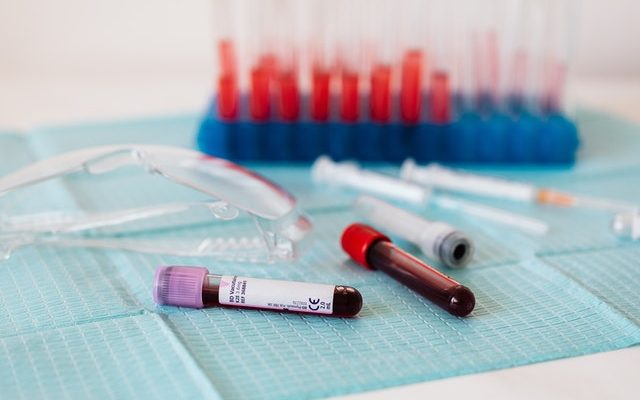4 Different Ways ENT Disorders Are Diagnosed

The importance of a thorough examination of the eye, ear, nose, and throat receives too little attention. Many people have the tendency to ignore any discomfort whenever they feel pain in these areas.
The ears, nose, and throat, commonly referred to as ENT, are vital parts of the human body that are utilized every day. The ears are not only responsible for our sense of hearing but also function to help provide a sense of balance. The nose is the sensory organ that equips you with the ability to smell, partially responsible for our sense of taste but most importantly, functions as a humidifier of the air we breathe; and the throat primarily functions as a pathway for air to the lungs and food and fluids to the esophagus down to the stomach.
Indeed, it is imperative that regular checkups of our ears, nose, and throat must be recognized and rigidly observed because the dysfunction of any of the three will adversely affect your quality of life. If you feel any discomfort or if you feel pain in these areas, it is important to seek immediate medical assistance to get the precautionary measures needed.
Table of Contents
4 Different Ways ENT Disorders Are Diagnosed
Explore how ENT disorders such as sleep apnea, ear infections, sinusitis, and strep throat are diagnosed using advanced medical techniques. Learn about symptoms, testing methods, and when to seek professional help.
Sleep Apnea
Sleep apnea is a serious sleep disorder that causes one to stop breathing for brief periods of time while sleeping. According to a study published by the American Journal of Epidemiology, nearly 30 million people in the United States suffer from sleep apnea.
Sleep apnea is tough to identify especially since most of its signs and symptoms occur during sleep. These symptoms and signs include:
- Loud and chronic snoring
- waking up at night feeling short of breath
- gasping for air
- pauses in breathing
- daytime sleepiness and fatigue
- morning headaches
In determining if you have sleep apnea, your doctor will first ask about your sleep patterns and sleep history. After the initial examination, your doctor will then check if you have an enlarged tonsil, uvula, or some other structures that cause any blockage in the airway. You may also be advised to take a home or clinic-based sleep test to further assess your status.
The tests used to see if you have sleep apnea include nocturnal polysomnography and home sleep tests.
During the nocturnal polysomnography, you’re hooked up to equipment that will monitor your heart, lung, and brain activity, as well as your arm and leg movements, breathing patterns, and blood oxygen levels while asleep.
The home sleep test, on the other hand, involves a simplified test to be done at home to diagnose if you’re suffering from sleep apnea. The test will monitor your blood oxygen level, heart rate, breathing patterns, and airflow.
If sleep apnea is suspected, your doctor will refer you to an otolaryngologist to rule out the blockage in your throat or nose.
Ear Infections
An ear infection is one of the most prevalent ENT disorders which occurs when a viral or bacterial infection becomes trapped and affects the middle ear. This disorder can be very painful because of inflammation and fluid buildup in the middle ear. This ENT disorder is most common in infants and toddlers, and less common in adults than in children.
Here are some of the signs and symptoms that tell whether you or your loved one is probably suffering from this disorder:
- mild pain or discomfort inside the ear
- difficulty hearing
- fussiness in young infants
- fluid discharge from the ear
- hearing loss
- fever
- nausea and vomiting
- balance problems
- irritability that escalates at bedtime (for small children)
If you have the signs and symptoms of an ear infection, your physician will use an otoscope― a tool that has a light and magnifying lens. There are several medical suppliers in the market, such as Emech Medical, that allow you to buy this device. This instrument helps your doctor visualize the condition of your outer ear and eardrum. If there’s some redness or pus-like fluid inside the middle ear, your doctor will take samples to ascertain whether certain types of antibiotic-resistant bacteria are present.
Your doctor may also subject you to a computed tomography (CT) scan to check if the infection has spread beyond the middle ear. Lastly, a hearing test will be conducted if you’re diagnosed to be suffering from chronic ear infections.
Sinusitis
Sinusitis or sinus infection is an inflammation of the paranasal sinuses caused by bacteria, viruses, fungi, allergies, or even an autoimmune reaction. Sinusitis can be chronic or acute.
Symptoms of sinusitis include:
- a headache
- a cough
- blocked nose
- nasal discharge of various colors and consistency
- congestion
- reduced sense of smell
- a toothache
- halitosis, or foul-smelling breath
- fever
- fatigue
If sinusitis is suspected, your doctor will use an otoscope to go up the nose and visualize your nasal cavity. He will probably use an endoscope afterward to examine the opening into the sinus cavity and assess a direct sinus culture to check for any inflammation and/or discharge.
If the chronic sinusitis persists, a CT scan may be conducted.
Strep Throat
Strep throat occurs when the throat and surrounding structures become infected by streptococcal (strep) bacteria that can cause you to have a sore, scratchy throat. Strep throat is a contagious disease. It is more common during winter and spring and is spread through contact with droplets from an infected person’s respiratory tract. The infection mostly affects children ages 5 to 15, but anyone can get it.
Symptoms are usually abrupt in onset including:
- red, swollen tonsils
- difficulty swallowing
- enlarged tonsils
- nausea
- enlarged lymph nodes
- white patches on the tonsils or in the back of the throat
- fever
- body aches
- skin rash
- fatigue
To diagnose or rule out strep throat, your doctor will first perform a physical examination, ask about your health history, and take a lab test such as a rapid strep test or throat culture.
The examination involves assessing the back of the throat, where your doctor may take a throat swab right away. If strep throat is suspected based on this assessment, your doctor will conduct further tests to check for the presence of strep bacteria.
If your doctor does a throat culture, he/she will swab a sample of cells from the back of your throat. The sample will be placed in a special cup where the strep bacteria is given room to grow over time. If the bacteria grow, you are diagnosed with strep.
A rapid test is another way to determine if you’re suffering from strep throat although this test is proven not to yield an accurate result always. If the rapid test suggests that you have strep throat, there is no need to do another throat culture while if the rapid test is negative but you have the signs and symptoms of strep throat, your doctor may run a throat culture to make sure that the rapid test was accurate.
Frequently Asked Questions
Q: What are the common symptoms of ENT disorders?
A: Symptoms vary by disorder but can include difficulty breathing, ear pain, nasal congestion, and throat soreness.
Q: When should one see a doctor for potential ENT issues?
A: Immediate medical attention is advised if there’s persistent pain, difficulty breathing, or sudden changes in hearing or swallowing.
Q: What professionals specialize in diagnosing ENT disorders?
A: Otolaryngologists specialize in diagnosing and treating ear, nose, and throat conditions.
About The Author:
Emma Clarke is a dentist by profession and an aspiring writer. She reads a lot and loves dissecting philosophical observations on classic films.










